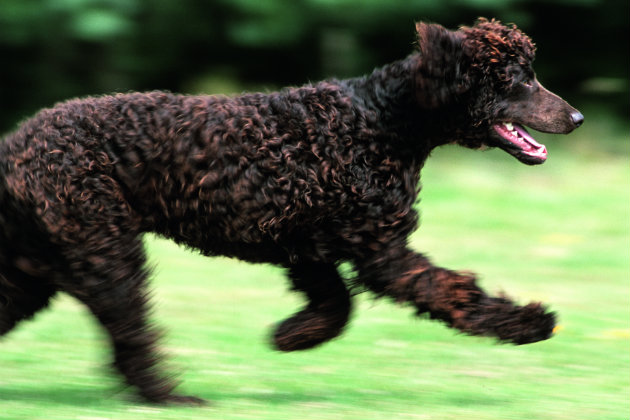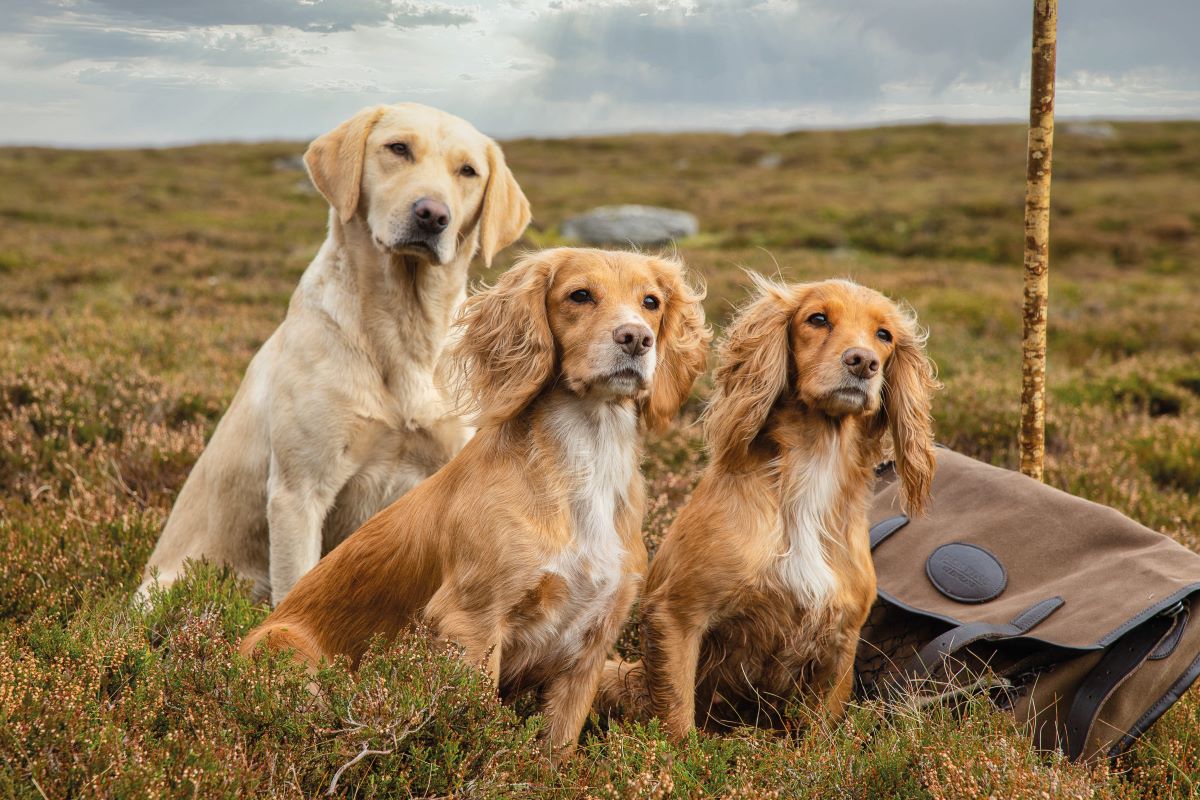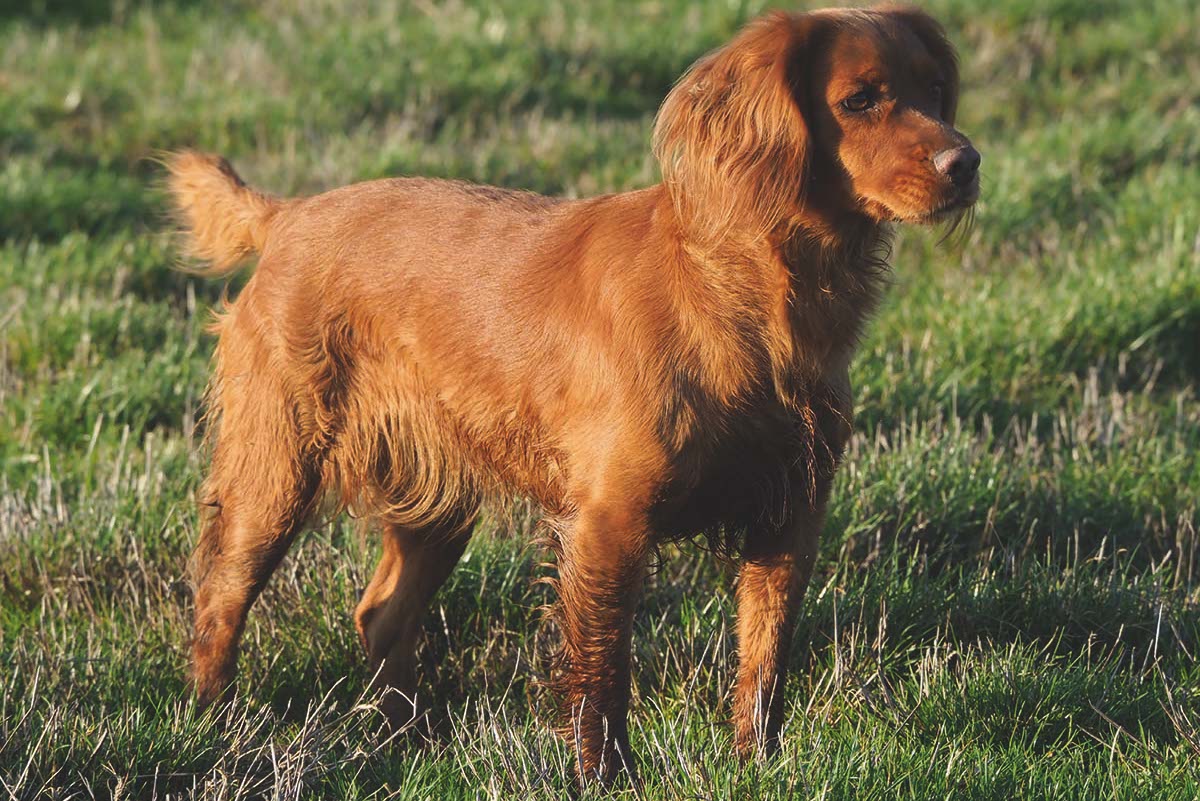Unusual gundog breeds
David Tomlinson suggests some unusual gundog breeds for the adventurous Gun who fancies something a little bit different

Chesapeake
A couple of years ago I went to photograph dogs on a local shoot. All but one of the Guns arrived in a Range Rover, Discovery or similar modern 4×4: the one exception drove up in a Series I Land Rover. It was a 1958 SWB model, and had been beautifully restored. It looked tiny when parked alongside the latest crop of off-roaders, and I was fascinated to see its owner open the back door to reveal a handsome pair of flatcoated retrievers.
Unusual gundog breeds
While working flatcoats may not be rarities, they are sufficiently unusual to be noteworthy.
I later chatted to the Land Rover man, who told me that he had owned his machine for more than 30 years and had restored it himself. He went on say that he used to have Labradors, but had switched to flatcoats as he fancied something different that would complement the Land Rover.
There are many similarities between a classic car and unusual gundog breeds, he explained. They both require a great deal of work, but the satisfaction of ownership is the reward.
It’s a sentiment that makes a great deal of sense to me as I’ve long argued that there is a connection between the two. Owners of classic cars tend to be enthusiasts. Early Land Rovers, for example, are noisy, cramped and uncomfortable, but they ooze charm. Our unusual gundog breeds generally appeal to a similar sort of enthusiast, prepared to overlook the dog’s shortcomings because it is different — and most likely good-looking, too.
You may have to be brave to be different, but there’s no doubt that for a wildfowler a Chesapeake makes much more sense than a springer. Similarly, cockers — the currently fashionable do-everything dogs — do not like sitting at pegs: if you are principally a driven shooter, a flatcoat would certainly be a better bet. Many Labradors go rough shooting, but Clumbers are great hedgerow hunters, as good a reason as any to give one a try.
Of course most of the more unusual gundog breeds are rare for a reason. It may be because that many generations have been bred for show or as pets, rather than for work, so it takes time to reignite the working instinct. Another reason may be that a particular breed is simply hard to train or slow to mature.
Just as restoring and maintaining a classic car is a challenge, so too is training and handling a classic or exotic gundog, but the rewards are many. If you fancy giving it a try, here’s my guide to the best breeds to consider.

Flat coated retriever
Flatcoated retriever
A breed that reached its peak of popularity before the First World War. By the time that Archduke Franz Ferdinand has been assassinated in Sarajevo, the flatcoat was already in decline. Today it remains a remarkably popular breed in the show ring, but good workers are in short supply.
Often described as the Peter Pan of the gundog world because they are notoriously slow to mature, flatcoats are renowned for good noses and soft mouths, and a well-trained individual can make the perfect peg dog, or a brace or trio an impeccable picking-up team.
Disadvantages compared with a Labrador are the need for regular grooming, and the fact that it’s likely to take you twice as long to train one to the same standard. Many strains are also susceptible to cancer, so buy with care. There is a choice of just two colours, black or liver (never chocolate, please).
Best for: the man in tweeds who prefers side-by-sides to over-and-unders.

Chesapeake retriever
Chesapeake retriever
This big, powerful retriever resembles a somewhat butch version of a Labrador and the two undoubtedly share common ancestry. The Chessie evolved as the ultimate North American wildfowling dog, earning its stripes (and stars) on the huge tidal estuary that borders Maryland and Virginia. Here it was the breed of choice of the 19th-century commercial gunners who shot prodigious amounts of wildfowl to supply the New York markets.
There’s no better wildfowling companion than this — a well-trained Chesapeake can cope with the strongest of tides, lift the heaviest geese and put up with the most bitter weather. It even comes in a wonderfully camouflaged coat, usually described as dead straw. Disadvantages include its size, its appetite — a big dog will eat as much as three cocker spaniels — and the fact that it is a breed notorious for its wilful temperament. Learning doesn’t come easy.
Best for: the lone wildfowler.

The Irish water spaniel can hunt, point and retrieve, but it’s not an easy dog to train
Irish water spaniel
The joker in the retriever pack: in the show ring it’s classified as a spaniel, but for competitions the Kennel Club calls it a retriever. It has considerable appeal for the shooting person who dares to be different, as there’s nothing else, except perhaps a gun-trained poodle, that looks anything like it.
With the right training an Irish water spaniel can turn its paw to most things, from sitting patiently as a peg dog to working on the marsh.
Finding a puppy from a good working kennel will be difficult, for it’s a rare breed with only roughly 100 puppies born a year. It’s also prone to suffer from what is known as follicular dysplasia — hair loss — that is hereditary and has no cure. You might find yourself lending your dog your sweater.
Best for: the owner who doesn’t mind explaining that it’s not a poodle.

Clumber spaniels
Clumber spaniel
Forget about those huge white, droopy-eyed monsters that still appear at Crufts: the modern working Clumber has been bred back to look much like the handsome dogs portrayed so beautifully by the Victorian dog artist John Emms. The 21st-century Clumber should work like its forebears, too, with sufficient stamina to take a long day’s rough shooting in its stride.
Great effort has gone into restoring the Clumber as a serious working breed, and it is work that has paid off handsomely. A good Clumber isn’t expected to beat up cover with the speed of a springer, but it will show persistence and pace, use its nose diligently and retrieve with style. Clumber puppies are irresistible, so don’t view unless you are planning to buy, but for a good puppy the price will be high. One of the unusual gundog breeds you will see more of.
Best for: the rough shooter who can no longer run as fast as his springer.
Field spaniel
The pundits will tell you the field spaniel has by far the most handsome head of any of our native spaniels, and few who know this rare spaniel would disagree. However, whether there are sufficient brains in that head to become a good gundog is a different matter, as for many decades they have been bred for looks rather than work. Finding a puppy suitable for training is likely to be more of a challenge than training the puppy. However, should you succeed, you will be able to boast of having one of the rarest working gundogs in Britain.
Field spaniels come in a variety of colours, but they look best in solid black or liver. It’s a breed you can work during the week and take to shows at the weekend, while the 97-year-old Field Spaniel Society will give you plenty of support and advice.
Best for: anyone who admires long-horned cows, Suffolk punch horses and old English pheasant fowl.

Sussex spaniel
The Sussex spaniel
Originally bred to work in the beating line in its native Sussex, where it was required to go under rather than over the bracken and brambles, the Sussex is unique among spaniels in that it is both expected and allowed to give tongue when hunting game. Though these spaniels can be trained to retrieve, it’s not their strength, so it’s best not to bother. Concentrate instead on making sure that your spaniel hunts close to you, and returns speedily to the whistle. Only seven Sussex spaniels were known to have survived the Second World War. Such a tiny gene pool means that the breed suffers from a lack of genetic variety, with corresponding problems. These spaniels are also renowned for being noisy and destructive when bored, while some individuals are aggressive to other dogs. You have been warned.
Best for: the keen beater who doesn’t want to go picking up.

The Welsh springer spaniel
Welsh springer spaniel
No spaniel is prettier than the red-and-white Welshie, which explains why it is so popular in the show ring. Slightly smaller and daintier than its English cousin, the Welsh springer also lacks its bracken-bashing ability. However, given the right training, a Welsh springer can make a satisfactory rough-shooter’s companion, and will always be a dog that pleases the eye.
Only a small minority of Welsh springer owners work their spaniels, which is a great pity, as even dogs from generations of show breeding still display an aptitude for hunting. The Welsh Springer Spaniel Club does encourage its members to work their dogs and can advise on training.
Best for: anyone with the name Thomas, Lloyd, Evans or Davies.

English setter
English setter
One of England’s most successful exports, on the Continent this stylish breed is among the most popular of working gundogs. In contrast, here in the UK setters are generally regarded as grouse-moor specialists and it is exceptionally rare to see one working on a low-ground shoot.
Continental setters are expected to retrieve as a matter of course, and with patient training it’s rarely difficult to persuade them to do so. It would be pushing your luck to hope to make a peg dog out of a setter, but given sympathetic training there’s no reason why one shouldn’t become an exciting all-round rough-shooting dog.
Best for: the talented trainer who is interested in taking on one of the more unusual gundog breeds.

Trainer Howard Kirby and his rehomed German longhaired pointer, Tashi
German longhaired pointer
There’s more than a dozen Continental HPR breeds to tempt anyone who fancies something radically different. The setter-like GLP is arguably the best-looking of the lot, yet curiously it has never caught on here. This is despite many notable successes in British field trials, and even outright victory in the HPR Championship in 2014.
Quite why these talented dogs have never become more popular is a mystery — just 17 puppies were registered with the Kennel Club last year. If you want a dog that can hunt with style, point with the best of them and retrieve competently, then the GLP may well be the breed for you, though you might have to import one from Holland or Germany.
Best for: the Continental HPR aficionado who dares to be different.








